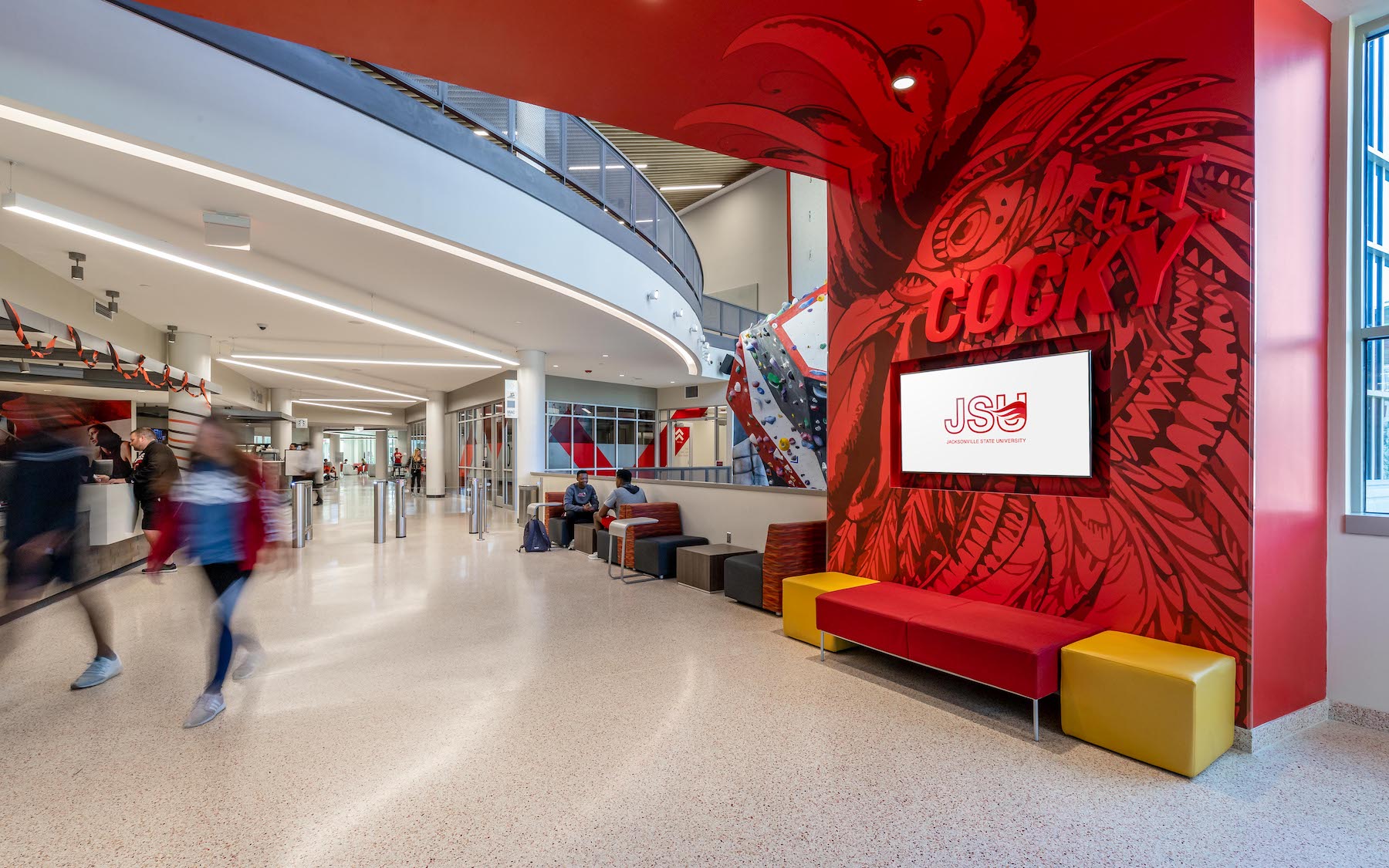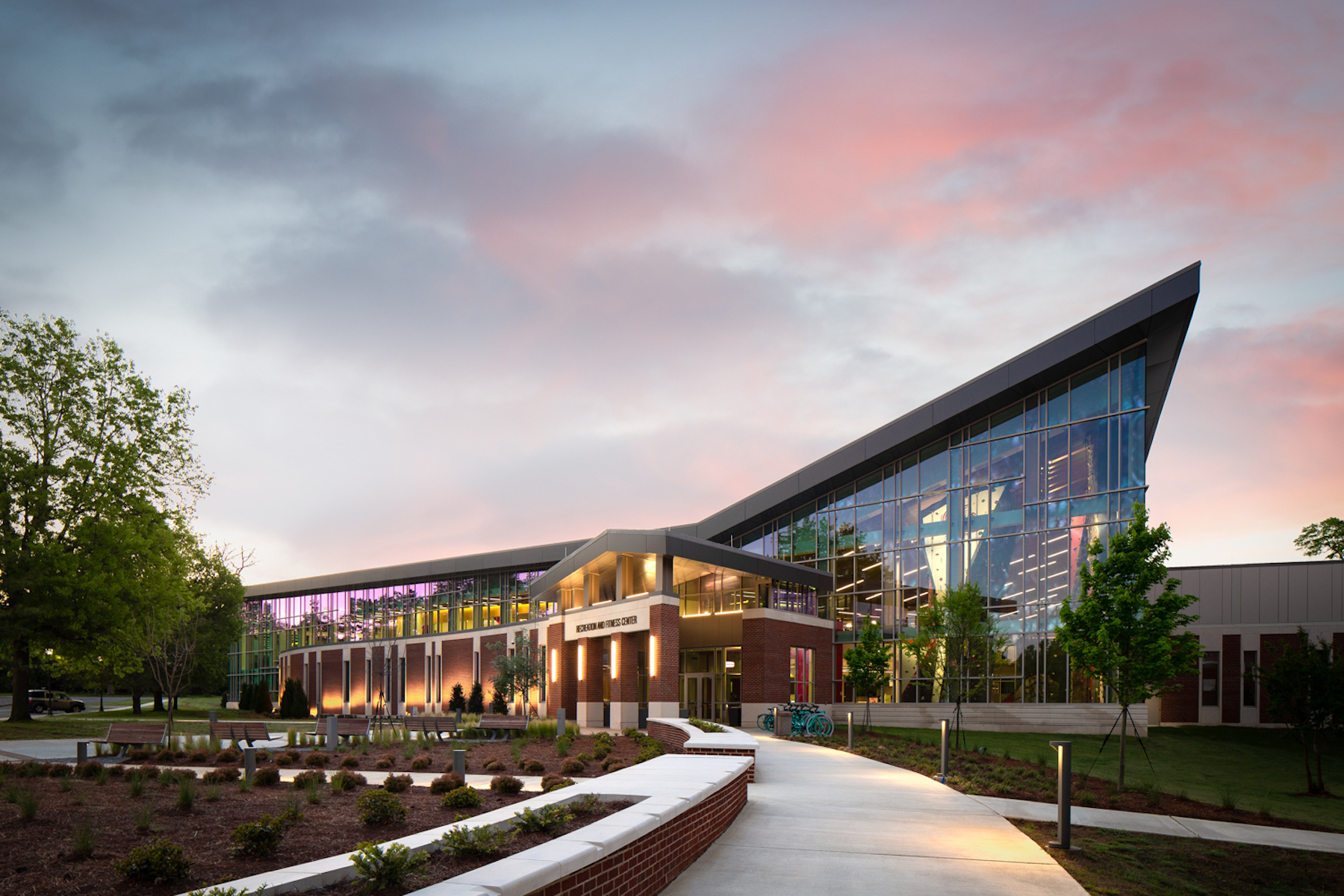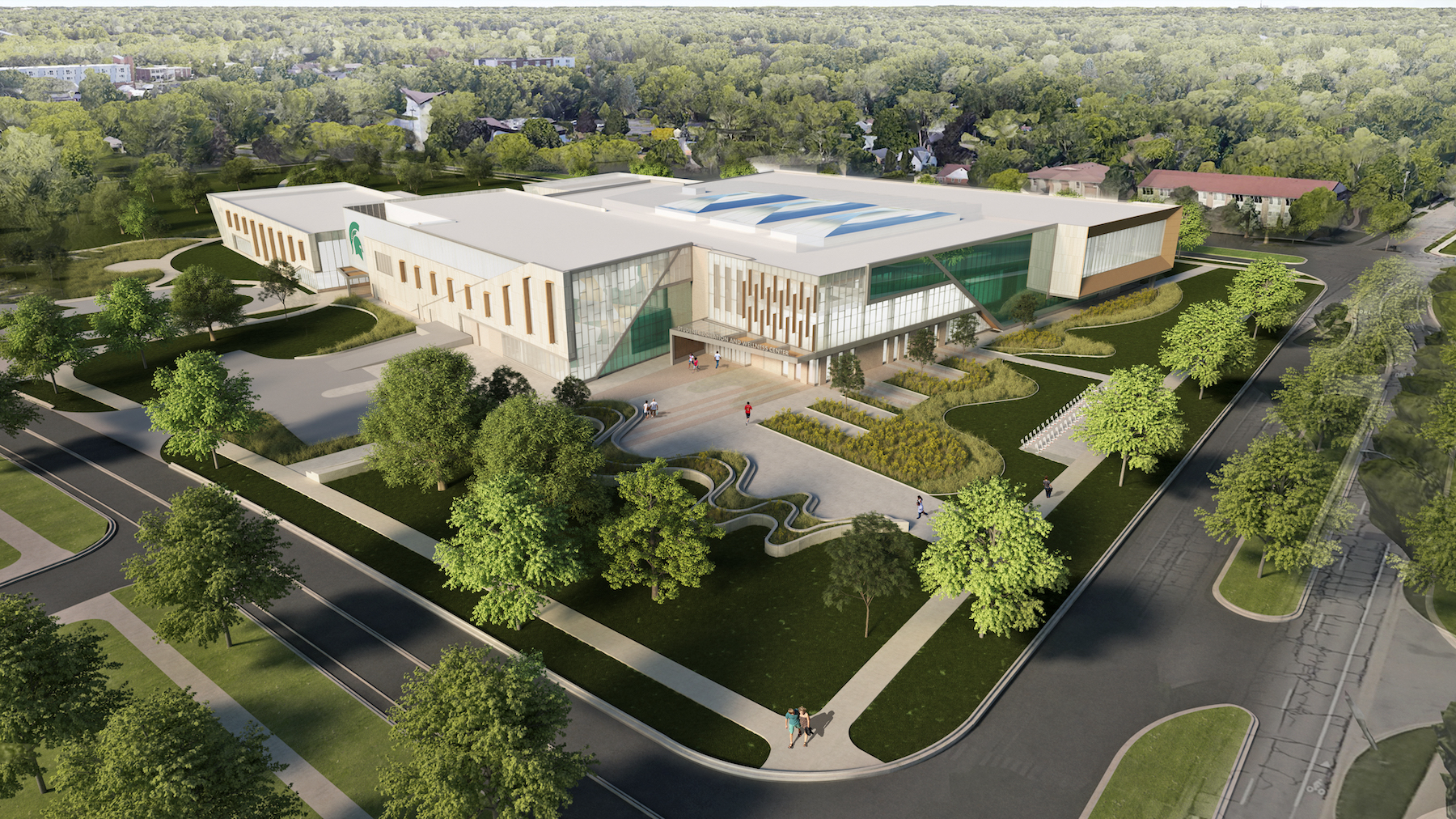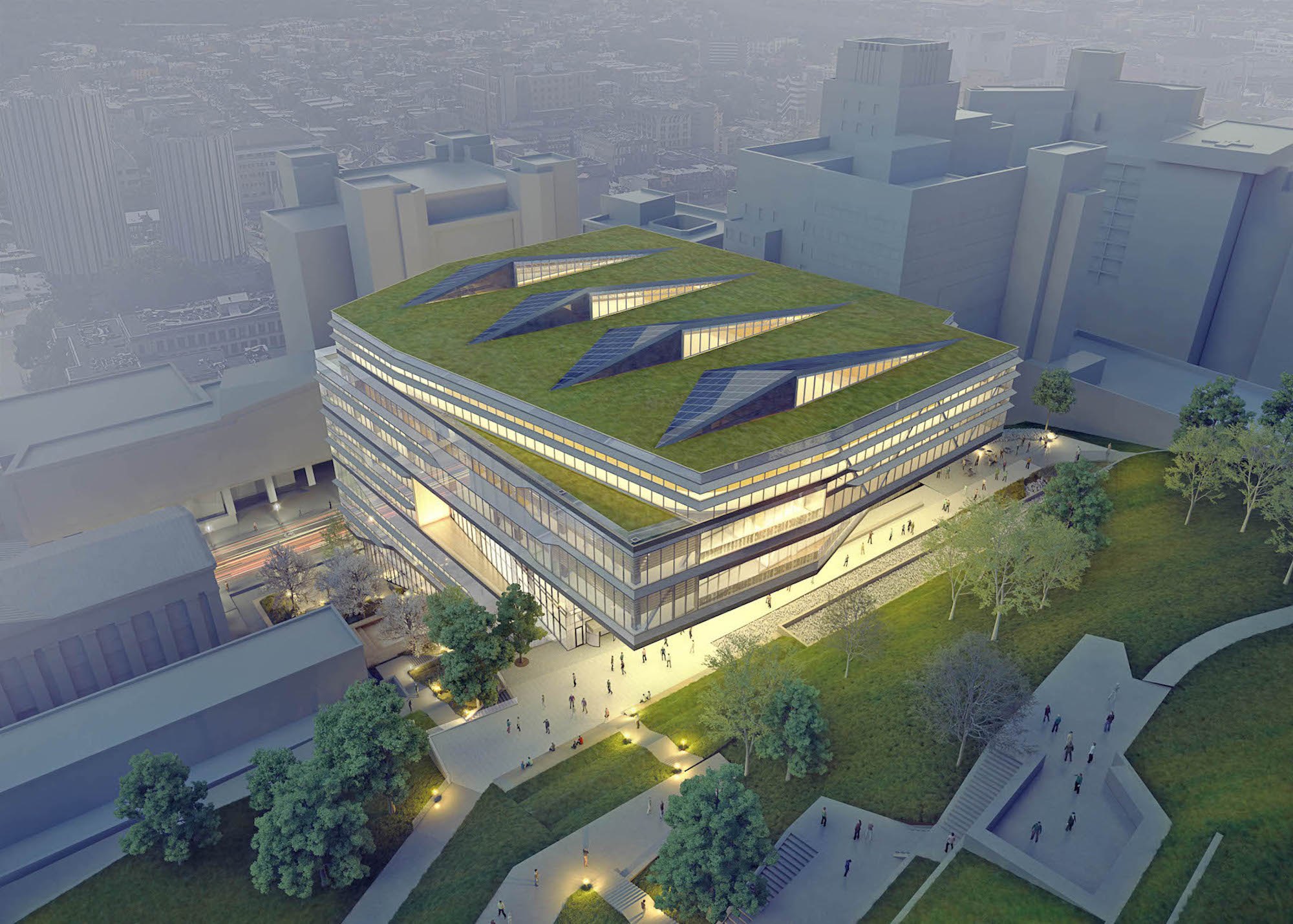On September 29 of last year, the University of Pittsburgh broke ground at its Oakland campus on a new Recreation and Wellness Center, a $255 million project whose 270,000 square feet will spread over nine stories, making this the tallest building of its kind in the U.S. when it opens in the fall of 2024.
Around the same time of the groundbreaking, Michigan State University in East Lansing was moving forward on its plans for a three-story 300,000-sf Health and Wellness Center that is scheduled to open in 2025, and whose design and programming were informed by focus groups with students.
The common thread connecting these projects is their design architect, Columbus, Ohio-based Moody Nolan, which celebrates its 40th anniversary last year. Over the past quarter-century, Moody Nolan has become one of the industry’s leading specialists in the creation of collegiate recreation facilities, according to Campus Rec magazine. The firm’s signature in this typology is designing rec centers to be campus destinations.
As such, Moody Nolan has had a ringside seat to watch how demand for rec centers has evolved to incorporate user well-being. “Our clients aren’t only concerned about physical space, but are also asking ‘why’ about these projects,” says Troy Sherrard, FAIA, a Partner and Sports + Recreation Practice Design Leader, who has been with the firm for 20 years. Consequently, he continues, more clients are requesting “hybrid environments” that “build habits” for health and wellness in students.
Shared spaces a priority for recreation centers


Sherrard says that certain “traditional” spaces, like athletic fields and courts, and even aquatic amenities, are still must haves in rec centers. On the other hand, Moody Nolan has seen less demand lately for racquet sports spaces, and more demand for “shared spaces,” such as turf gyms within fieldhouses, and climbing and bouldering options. Clients also want multipurpose rooms for activities that range from “high energy to mediation,” says Sherrard, who spoke with BD+C last week.
He points specifically to the 101,000-sf, $30 million rec center at Jacksonville State University in Alabama, which opened in January 2019. Sherrard says prior to that opening, fitness and wellness were not prevalent concerns for most rural southern schools. Jacksonville State, conversely, saw the new rec center—which would have the largest footprint of any building on its campus—as one of its “anchors.”
The building’s highlights, says Sherrard, feature a 43-ft-tall outdoor climbing wall, social engagement spaces that include a campus “living room,” and an outdoor “adventure” component for biking and walking. Sherrard adds that rec centers need to be immersive, which in Jacksonville State’s case meant telling a design story through branding “to root the student in a sense of place.” (He notes that anyone walking into this rec center can see most of its rooms at first glance.)
How recreation centers can reinforce student health
After Jacksonville State opened its rec center, its enrollment for the next fall semester jumped by 6 percent. (The school’s full- and parttime enrollment for the fall of 2022 was 9,633, compared to 7,696 in the spring of 2018.)
Other campuses around the country flaunt their recreational and athletic facilities as recruitment bait. “That always comes up, and without [a rec center] there’s a void,” says Sherrard. He points out that Penn State University’s rec center (designed by his firm) is across the street from the college’s Admissions building, so the rec center is the first thing prospective and incoming students and their parents see, accentuating the college’s commitment to health and wellness.

Appealing to student needs is at the forefront of rec center design and operations, says Sherrard. Moody Nolan’s focus groups for the Michigan State University project (for which Rossetti is the AOR) revealed two desired trends that became key design drivers: biophilia and what Sherrard calls “zones for discovery.”
This rec center’s design is created around a courtyard. According to MSU, the building’s front façade opens to an outdoor greenspace with “large spans of glass for natural daylight and ventilation, allowing for integrated indoor-outdoor functional fitness experiences.”
Each floor of Pitt’s Recreation and Wellness center will have a different emphasis: dining, free weights, swimming and aquatic exercise, a gym, a jogging track, a multipurpose room, etc. The building itself, built into an 85-ft hillside, will connect Pitt’s upper and lower campuses. Also built into the hillside will be a 160-step “Panther Run,” that includes an outdoor platform halfway up for fitness classes.
Given its verticality, Pitt’s Recreation and Wellness center “could be a game changer” for urban-situated rec centers, says Sherrard.
Related Stories
| Mar 11, 2011
Slam dunk for the University of Nebraska’s basketball arena
The University of Nebraska men’s and women’s basketball programs will have a new home beginning in 2013. Designed by the DLR Group, the $344 million West Haymarket Civic Arena in Lincoln, Neb., will have 16,000 seats, suites, club amenities, loge, dedicated locker rooms, training rooms, and support space for game operations.
| Feb 23, 2011
The library is dead, long live the library
The Society for College and University Planning asked its members to voice their thoughts on the possible death of academic libraries. And many did. The good news? It's not all bad news. A summary of their members' comments appears on the SCUP blog.
| Feb 11, 2011
Sustainable features on the bill for dual-building performing arts center at Soka University of America
The $73 million Soka University of America’s new performing arts center and academic complex recently opened on the school’s Aliso Viejo, Calif., campus. McCarthy Building Companies and Zimmer Gunsul Frasca Architects collaborated on the two-building project. One is a three-story, 47,836-sf facility with a grand reception lobby, a 1,200-seat auditorium, and supports spaces. The other is a four-story, 48,974-sf facility with 11 classrooms, 29 faculty offices, a 150-seat black box theater, rehearsal/dance studio, and support spaces. The project, which has a green roof, solar panels, operable windows, and sun-shading devices, is going for LEED Silver.
| Feb 11, 2011
Research facility separates but also connects lab spaces
California State University, Northridge, consolidated its graduate and undergraduate biology and mathematics programs into one 90,000-sf research facility. Architect of record Cannon Design worked on the new Chaparral Hall, creating a four-story facility with two distinct spaces that separate research and teaching areas; these are linked by faculty offices to create collaborative spaces. The building houses wet research, teaching, and computational research labs, a 5,000-sf vivarium, classrooms, and administrative offices. A four-story outdoor lobby and plaza and an outdoor staircase provide orientation. A covered walkway links the new facility with the existing science complex. Saiful/Bouquet served as structural engineer, Bard, Rao + Athanas Consulting Engineers served as MEP, and Research Facilities Design was laboratory consultant.
| Feb 11, 2011
A feast of dining options at University of Colorado community center, but hold the buffalo stew
The University of Colorado, Boulder, cooked up something different with its new $84.4 million Center for Community building, whose 900-seat foodservice area consists of 12 micro-restaurants, each with its own food options and décor. Centerbrook Architects of Connecticut collaborated with Denver’s Davis Partnership Architects and foodservice designer Baker Group of Grand Rapids, Mich., on the 323,000-sf facility, which also includes space for a career center, international education, and counseling and psychological services. Exterior walls of rough-hewn, variegated sandstone and a terra cotta roof help the new facility blend with existing campus buildings. Target: LEED Gold.
| Feb 11, 2011
Chicago high-rise mixes condos with classrooms for Art Institute students
The Legacy at Millennium Park is a 72-story, mixed-use complex that rises high above Chicago’s Michigan Avenue. The glass tower, designed by Solomon Cordwell Buenz, is mostly residential, but also includes 41,000 sf of classroom space for the School of the Art Institute of Chicago and another 7,400 sf of retail space. The building’s 355 one-, two-, three-, and four-bedroom condominiums range from 875 sf to 9,300 sf, and there are seven levels of parking. Sky patios on the 15th, 42nd, and 60th floors give owners outdoor access and views of Lake Michigan.
| Feb 11, 2011
Apartment complex caters to University of Minnesota students
Twin Cities firm Elness Swenson Graham Architects designed the new Stadium Village Flats, in the University of Minnesota’s East Bank Campus, with students in mind. The $30 million, six-story residential/retail complex will include 120 furnished apartments with fitness rooms and lounges on each floor. More than 5,000 sf of first-floor retail space and two levels of below-ground parking will complete the complex. Opus AE Group Inc., based in Minneapolis, will provide structural engineering services.
| Feb 11, 2011
Four-story library at Salem State will hold half a million—get this—books!
Salem State University in Massachusetts broke ground on a new library and learning center in December. The new four-story library will include instructional labs, group study rooms, and a testing center. The modern, 124,000-sf design by Boston-based Shepley Bulfinch includes space for 500,000 books and study space for up to a thousand students. Sustainable features include geothermal heating and cooling, rainwater harvesting, and low-flow plumbing fixtures.
| Jan 21, 2011
Primate research facility at Duke improves life for lemurs
Dozens of lemurs have new homes in two new facilities at the Duke Lemur Center in Raleigh, N.C. The Releasable Building connects to a 69-acre fenced forest for free-ranging lemurs, while the Semi-Releasable Building is for lemurs with limited-range privileges.
















